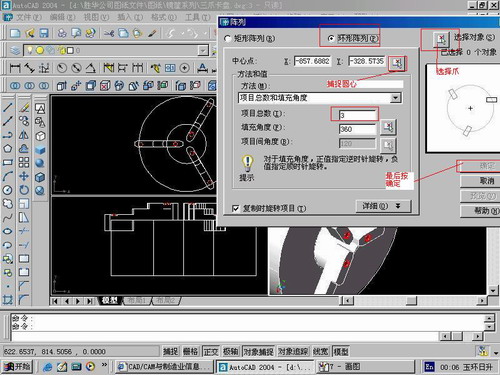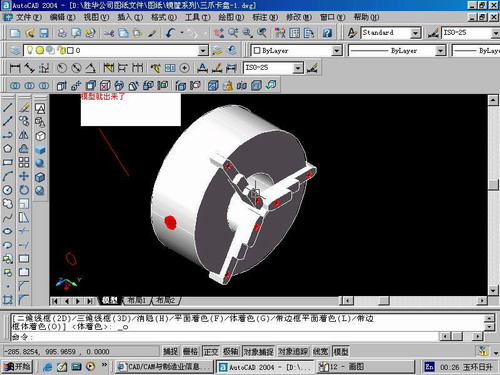1) three-cell model


三胞模型
1.
A relatively reasonable three-cell model for 3D 4-directional braided composites is proposed based on the geometrical characteristic of the yarns.
根据三维四向编织复合材料中纤维束的空间几何结构特征,建立了比较合理的三胞模型。
2) three-cell model


三细胞模型
1.
An improved three-cell model,which includes interior cells,two kinds of surface cells and corner cells,was proposed based on the geometrical characteristic of the yarns for 3-D 4-directional braided composite.
根据三维四向编织复合材料中纤维束的空间几何结构特征,提出了改进的三细胞模型,该模型包含内部单胞、两种表面单胞以及棱角单胞四类结构,考虑了各类单胞中纤维束的空间结构,并引入平均纤维束填充因子来描述各类单胞中纤维束的不同截面形状对材料弹性常数的影响。
3) unit cell


单胞模型
1.
A unit cell model was applied to study the creep damage behavior after fiber fractures in the fiber reinforced composites at high temperature.
首先利用复合材料纤维断裂单胞模型,编制蠕变损伤子程序,对单胞模型进行蠕变损伤分析。
2.
A three-dimensional cubic unit cell was employed according to the real micro-structure of the particles reinforced metal-matrix composites.
有限元分析模拟复合材料真实微细观结构,采用立方体单胞模型,基体立方体里面包含有不同数目的球形增强颗粒,增强颗粒的位置坐标由随机函数确定。
3.
The defined unit cells have the brick shape which height is equal to the braiding pitch, and oriented in the same reference coordinate as the composites.
该单胞模型为一六面体形状,其取向平行于预制件的表面,且高为编织花节长。
4) unit cell model


单胞模型
1.
A geometric unit cell model of the three-dimensional and seven-directional braided composite is established to describe the basic structure,and the relationship between braiding parameters is deduced.
在此基础上,建立了能反映其基本结构的几何单胞模型,并推导了编织参数之间的数学关系,为进一步分析三维七向编织复合材料的力学性能奠定了基础。
2.
According to the relationship between the excellent properties of 3-dimensional 5-directional braided composites and their microstructure, the unit cell model is established on the pattern of the rule of the yarn movement.
针对三维五向编织复合材料的优异性能与其细观结构的密切关系,在分析三维五向编织物纱线的运动规律的基础上,建立了三维五向编织结构的单胞模型,并推导了有关参数之间的数学关系,计算了纤维体积含量。
3.
A unit cell model based on meso-structure and preparation procedure is presented for the in-plane coefficient of thermal expansion(CTE) of 2-D braided C/SiC composites.
根据二维编织C/SiC复合材料的细观结构及其制备工艺特点,提出了一种预测该材料面内热膨胀系数的单胞模型。
5) Cell model


体胞模型
1.
For this purpose, a three-dimensional cell model is established, and the damage of the metal is calculated by finite element method.
为了研究金属材料中由于夹杂或第二相粒子的存在所形成的孔洞等 ,细观缺陷的大小及分布的非均匀性对材料损伤演化的影响 ,建立了孔洞群三维体胞模型 ,可以在孔洞大小及分布非均匀的情况下对材料损伤进行有限元模拟计算 。
2.
The constitutive potential of particle reinforced composites (PRC) is analyzed on the basis of the cell model.
在体胞模型的基础之上应用解析方法分析了颗粒或短纤维增强复合材料的本构行为 ,结合数值计算给出了表征材料本构关系的解析表达式 。
3.
Based on the Cell model and the theory of mesomechanics,the evolution equation of void volume was derived.
本文基于细观塑性理论,采用体胞模型和里兹法,推导出了大锻件内部空洞的体积演化方程,通过分析空洞闭合的力学条件,建立了大锻件内部空洞的热锻闭合准则。
6) cell model


胞腔模型
1.
Equations of excess thermodynamic function and activity coefficient based on cell model and athermal solution theory;
基于胞腔模型和无热溶液理论推导超额热力学函数和液相活度系数方程
补充资料:AutoCad 教你绘制三爪卡盘模型,借用四视图来建模型
小弟写教程纯粹表达的是建模思路,供初学者参考.任何物体的建摸都需要思路,只有思路多,模型也就水到渠成.ok废话就不说了.建议使用1024X768分辨率
开始
先看下最终效果

第一步,如图所示将窗口分为四个视图

第二步,依次选择每个窗口,在分别输入各自己的视图

第三步,建立ucs重新建立世界坐标体系,捕捉三点来确定各自的ucs如图

第四步,初步大致建立基本模型.可以在主视图建立两个不同的圆,在用ext拉升,在用差集运算.如图:

第五步:关键一步,在此的我思路是.先画出卡爪的基本投影,在把他进行面域,在进行拉升高度分别是10,20,30曾t形状.如图:

第六步:画出螺栓的初步形状.如图

第七步:利用ext拉升圆,在拉升内六边形.注意拉升六边行时方向与拉升圆的方向是相反的.
之后在利用差集运算


第八步:将所得内螺栓模型分别复制到卡爪上,在利用三个视图调到与卡爪的中心对称.效果如图红色的是螺栓,最后是差集

第九步:阵列

第10步.模型就完成了

来一张利用矢量处理的图片

说明:补充资料仅用于学习参考,请勿用于其它任何用途。
参考词条